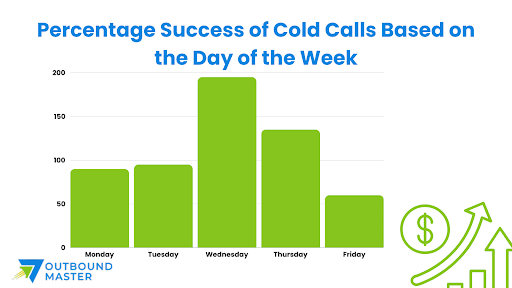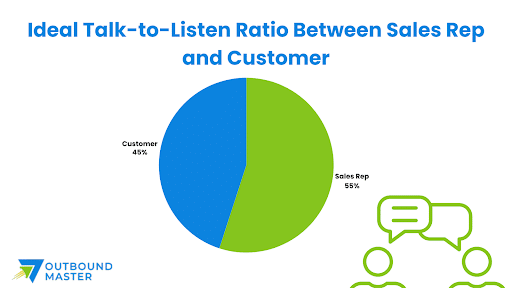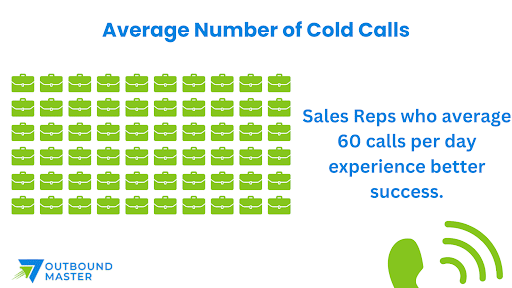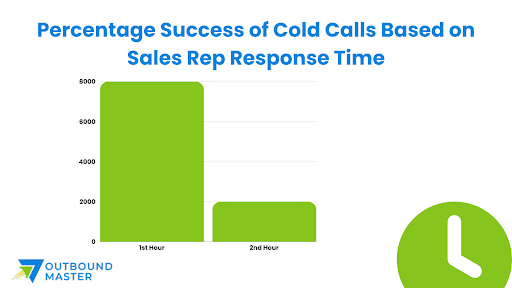How to Create Cold Call Scripts That Actually Work
Cold calling remains a vital aspect of outbound sales strategies, yet its effectiveness hinges greatly on the quality of the cold call script employed. Crafting cold call scripts that yield tangible results demands a nuanced understanding of not just the product or service being offered, but also the needs and pain points of the prospective customer.
| Script Part | Description |
| Introduction | Start with a friendly and professional introduction, including your name, company, and the purpose of the call to set a positive tone. |
| Value Proposition | Clearly outline the unique benefits and features of your product or service to demonstrate how it can solve a problem or fulfill a need for the prospect |
| Open-Ended Questions | Incorporate open-ended questions to engage the prospect in a conversation, gather insights about their needs, and guide the discussion effectively. |
| Handling Objections | Prepare responses to common objections that prospects might raise during the call to overcome challenges and keep the conversation flowing smoothly. |
| Call-to-Action | Include a clear and compelling call-to-action to guide the prospect towards the next steps, whether it’s scheduling a meeting, requesting more information, or making a purchase. |
| Personalization | Add personalized elements to your script to impress prospects and create a more human connection, avoiding sounding too scripted. |
| Preparation for Objections | Practice handling objections until your responses are seamless and natural to navigate through potential challenges during the call. |
| Positive Attitude | Maintain a positive attitude throughout the call as it can significantly impact the outcome and leave a lasting impression on the prospect |
In this guide, we’ll delve into the essential components and best practices for developing cold call scripts that captivate prospects, address objections effectively, and pave the way for successful sales outcomes. From understanding the importance of effective scripting to providing actionable tips for crafting compelling messaging, this guide aims to equip sales professionals with the knowledge and tools needed to excel in the realm of cold calling outreach and achieve their sales objectives.
Research and Preparation

Understanding the Target Audience
Before diving into cold call scripting, it’s crucial to have a deep understanding of the target audience. This involves identifying the demographics, characteristics, and preferences of the ideal customer profile (ICP). By analyzing existing customer data and market research, sales professionals can gain insights into the industries, roles, challenges, and motivations of their target audience. Understanding the target audience allows for the creation of tailored messaging that resonates with their specific needs and interests, increasing the likelihood of engagement and conversion during cold calls.
Researching Prospects and Their Pain Points
Beyond understanding the broader target audience, effective cold calling requires thorough research on individual prospects and their pain points. This entails gathering information about the prospect’s company, industry trends, recent news or events, and any specific challenges they may be facing. By conducting detailed research before making the call, sales professionals can demonstrate credibility, relevance, and empathy during the conversation. Identifying and addressing the prospect’s pain points directly positions the salesperson as a problem solver and increases the likelihood of capturing the prospect’s interest and attention.
Tailoring Scripts Based on Insights Gathered
Armed with a comprehensive understanding of the target audience and individual prospects, the next step is to tailor cold call scripts based on the insights gathered. Rather than using a generic script that applies to all prospects, personalized scripts are more effective in establishing rapport and building trust. Tailored scripts should address the prospect’s specific pain points, offer relevant solutions or benefits, and align with their priorities and objectives. By customizing the messaging to resonate with each prospect, sales professionals can increase the chances of meaningful engagement and ultimately, conversion. Additionally, incorporating language and tone that aligns with the prospect’s industry or communication style enhances the credibility and authenticity of the conversation, fostering a more positive response from the prospect.
Crafting an Engaging Opening in your Cold Calling Scripts

Personalizing the Introduction to the Prospect
Personalization is key to capturing the prospect’s attention and establishing a connection right from the start. Instead of launching into a generic introduction, take the time to research the prospect and find relevant information that you can reference in your opening statement. This could include mentioning a recent achievement or milestone of the prospect’s company, acknowledging their role or position, or referencing a mutual connection or shared interest. By demonstrating that you’ve done your homework and tailored your approach specifically to them, you show the prospect that you value their individuality and are genuinely interested in building a meaningful relationship.
Establishing Credibility and Relevance Early On
In addition to personalization, it’s crucial to establish credibility and relevance early in the conversation to capture the prospect’s interest and keep them engaged. This can be achieved by highlighting your expertise, experience, or track record of success in addressing similar challenges faced by the prospect. Share relevant examples or case studies that demonstrate your ability to deliver results and solve problems effectively. Additionally, tie your offering directly to the prospect’s pain points or objectives, emphasizing how your product or service can help them overcome challenges or achieve their goals. By positioning yourself as a trusted advisor and demonstrating the value you can provide, you set the stage for a productive and meaningful conversation with the prospect.
Communicating Value Proposition
Communicating the value proposition effectively is essential for capturing the prospect’s interest and demonstrating the value of your product or service. Here’s how to do it:
Clearly Articulating the Benefits of the Product/Service
Clearly communicate the tangible benefits and outcomes that the prospect can expect from using your product or service. Focus on how your offering solves a problem or fulfills a need for the prospect, making their life easier, more efficient, or more successful. Use straightforward language and avoid technical jargon to ensure clarity and understanding.
Addressing Specific Pain Points or Challenges of the Prospect
Tailor your value proposition to address the specific pain points or challenges that the prospect is facing. By empathizing with their struggles and offering a solution that directly alleviates their pain, you demonstrate a deep understanding of their needs and priorities. Use examples or case studies
to illustrate how your product or service has helped similar customers overcome similar challenges.
Highlighting Unique Selling Points and Differentiation
Emphasize what sets your product or service apart from the competition and why it’s the best choice for the prospect. Highlight unique features, capabilities, or benefits that differentiate your offering and provide a competitive advantage. Whether it’s superior functionality, innovative technology, or exceptional customer service, clearly communicate why the prospect should choose your solution over alternatives. By highlighting your unique selling points, you reinforce the value of your offering and differentiate yourself in the prospect’s mind.
Asking Open-Ended Questions In Cold Call Scripts

Encouraging Dialogue and Engagement
Open-ended questions serve as powerful tools for fostering dialogue and engagement during sales conversations. Unlike closed-ended questions that elicit simple yes or no answers, open-ended questions encourage prospects to provide detailed responses, share insights, and express their thoughts and feelings more freely. By asking open-ended questions, sales professionals can create a collaborative environment where prospects feel heard, valued, and actively involved in the conversation. This engagement lays the groundwork for deeper exploration of the prospect’s needs, challenges, and priorities, ultimately leading to more meaningful and productive interactions.
Probing to Uncover Prospect Needs and Motivations
Open-ended questions also enable sales professionals to probe deeper and uncover the prospect’s underlying needs, motivations, and pain points. By delving beyond surface-level information, sales reps can gain a more comprehensive understanding of the prospect’s situation and identify opportunities to provide tailored solutions that address their specific concerns. Probing questions should be designed to explore various aspects of the prospect’s business, challenges, goals, and preferences, allowing sales professionals to gather valuable insights that inform their approach and positioning. Through effective probing, sales reps can uncover hidden opportunities, overcome objections, and build stronger rapport with prospects.
Listening Actively and Adapting the Script Based on Responses
Active listening is essential when asking open-ended questions, as it allows sales professionals to fully understand and empathize with the prospect’s perspective. By actively listening to the prospect’s responses, sales reps can pick up on key insights, cues, and nuances that inform their next steps and responses. This attentive listening enables sales professionals to adapt their approach and tailor their messaging based on the prospect’s feedback, preferences, and concerns. By demonstrating genuine interest and responsiveness to the prospect’s input, sales reps can foster trust, build rapport, and create a more collaborative and productive sales conversation.
Handling Objections Effectively During Cold Calls

Anticipating Common Objections and Preparing Responses
Effective objection handling begins with anticipating common objections that prospects may raise during the sales process. By proactively identifying potential objections, sales professionals can prepare thoughtful and persuasive responses in advance. This involves understanding the prospect’s pain points, concerns, and potential hesitations, as well as familiarizing oneself with the competitive landscape and industry trends. Armed with this knowledge, sales reps can craft tailored responses that address the prospect’s objections directly, provide reassurance, and highlight the value and benefits of the product or service.
Empathizing with Prospect Concerns
Empathy is a crucial component of effective objection handling, as it demonstrates an understanding and validation of the prospect’s concerns and perspectives. Instead of dismissing objections or attempting to persuade the prospect, sales professionals should acknowledge and empathize with their concerns. This involves active listening, asking clarifying questions, and showing genuine empathy and concern for the prospect’s challenges and uncertainties. By empathizing with the prospect, sales reps build rapport, trust, and credibility, paving the way for more constructive and productive conversations.
Providing Relevant Examples of Testimonials to Overcome Objections
Providing relevant examples or testimonials is a powerful way to overcome objections and address the prospect’s doubts or skepticism. When faced with objections, sales professionals can leverage case studies, success stories, or testimonials from satisfied customers to demonstrate the real-world impact and effectiveness of their product or service. These examples serve as social proof, validating the claims and promises made during the sales conversation and alleviating the prospect’s concerns. By showcasing concrete examples of how the product or service has helped similar customers overcome similar objections or challenges, sales reps can instill confidence and credibility in the prospect’s mind, ultimately overcoming objections and moving the sales process forward.
Establishing Next Steps

Guiding the Conversation Towards Desired Outcomes
As the sales conversation progresses, it’s essential to guide it towards desired outcomes that align with both the prospect’s needs and your sales objectives. This involves steering the discussion towards specific goals or actions that move the sales process forward, such as scheduling a product demo, arranging a follow-up meeting, or submitting a proposal. By maintaining focus and clarity on the desired outcomes, sales professionals can ensure that the conversation remains productive and purposeful, maximizing the chances of achieving a successful outcome.
Proposing a Specific Action or Follow-Up Meeting
To solidify the next steps, sales professionals should propose a specific action or follow-up meeting that advances the sales process. This could involve suggesting a date and time for a follow-up call or meeting, outlining the agenda and objectives for the next interaction, or assigning specific tasks or responsibilities to both parties. By proposing a concrete action plan, sales reps demonstrate proactive leadership and commitment to moving the relationship forward, while also providing clarity and direction to the prospect.
Confirming Prospect Interest and Commitment
Before concluding the conversation, it’s crucial to confirm the prospect’s interest and commitment to the proposed next steps. This involves explicitly asking the prospect if they are interested in moving forward with the proposed action or meeting and seeking confirmation of their commitment. By confirming prospect interest and commitment, sales professionals can ensure that both parties are aligned and committed to advancing the sales process. Additionally, addressing any remaining concerns or objections at this stage can help alleviate doubts and solidify the prospect’s commitment to the next steps.
Closing the Call
Summarizing Key Points Discussed
As the call nears its conclusion, it’s essential to summarize the key points discussed during the conversation. This summary serves to reinforce the main takeaways and ensure that both parties are aligned on the key aspects of the discussion. By recapping the main points, sales professionals can confirm understanding and clarity, address any lingering questions or concerns, and lay the foundation for a successful conclusion to the call.
Reiterating Value Proposition and Benefits
Following the summary of key points, it’s important to reiterate the value proposition and benefits of the product or service. This reinforcement reinforces the value and benefits that the prospect stands to gain by moving forward with the proposed next steps. By reminding the prospect of the unique advantages and solutions offered, sales professionals can reinforce the prospect’s interest and motivation to take action.
Expressing Appreciation and Leaving the Door Open for Future Communication
Finally, it’s crucial to express appreciation for the prospect’s time and engagement throughout the call. Expressing gratitude acknowledges the prospect’s investment in the conversation and demonstrates respect for their time and attention. Additionally, sales professionals should leave the door open for future communication by expressing willingness to address any further questions or concerns and offering assistance as needed. By maintaining an open and positive tone, sales reps can leave a lasting impression and lay the groundwork for continued engagement and relationship-building in the future.
Compliance and Ethics Considerations
Ensuring Compliance with Regulations (e.g., GDPR, DNC)
Compliance with regulations such as the General Data Protection Regulation (GDPR) and the Do Not Call (DNC) registry is paramount in cold calling activities. Sales professionals must ensure that they have the necessary permissions or consent to contact prospects, especially when dealing with personal data. This involves understanding and adhering to the requirements of relevant regulations, such as obtaining explicit consent for communication and honoring opt-out requests promptly. By maintaining compliance with regulations, businesses mitigate legal risks and uphold trust and transparency in their interactions with prospects.
Respecting Prospect Privacy and Preferences
Respecting prospect privacy and preferences is essential for building trust and maintaining positive relationships. Sales professionals should always prioritize prospect privacy and respect their preferences regarding communication channels, frequency, and timing. This involves honoring opt-out requests, respecting time zone considerations, and providing clear options for opting out of further communication. By demonstrating respect for prospect privacy and preferences, sales reps foster goodwill and enhance the overall customer experience.
Training Sales Reps on Ethical Cold Calling Practices
Training sales reps on ethical cold calling practices is essential for ensuring that they conduct themselves with integrity and professionalism in their interactions with prospects. This training should cover topics such as compliance with regulations, respect for prospect privacy, and best practices for engaging prospects in a respectful and transparent manner. Sales reps should be equipped with the knowledge and skills needed to navigate ethical dilemmas and handle objections or rejections gracefully. By investing in ethical cold calling training, businesses cultivate a culture of integrity and responsibility, which ultimately enhances their reputation and credibility in the marketplace.
Conclusion
In today’s competitive business landscape, the ability to create effective cold call scripts is a valuable skill that can drive sales success and contribute to business growth. By incorporating the insights and strategies outlined in this guide, sales professionals can enhance their cold calling efforts, increase their effectiveness, and ultimately achieve their sales objectives.
By following these principles and continuously refining and optimizing their approach, sales professionals can create cold call scripts that not only work but also lay the foundation for meaningful and productive relationships with prospects.
Frequently Asked Questions (FAQs)
Why are cold call scripts important?
Cold call scripts provide a structured framework for initiating conversations with prospects, ensuring consistency and professionalism in outreach efforts. They help sales professionals communicate key messages effectively, overcome objections, and drive successful outcomes.
What compliance and ethical considerations should I keep in mind when creating a cold call script?
When creating a cold call script, it's essential to ensure compliance with regulations such as GDPR and DNC, respect prospect privacy and preferences, and train sales reps on ethical cold calling practices. Adhering to these considerations helps maintain trust and integrity in sales interactions.
How can I measure the effectiveness of my cold call script?
You can measure the effectiveness of your cold call script by tracking key metrics such as call conversion rates, appointment setting rates, and sales outcomes. Analyze the results regularly and make adjustments to the script based on feedback and performance data to optimize effectiveness over time.



